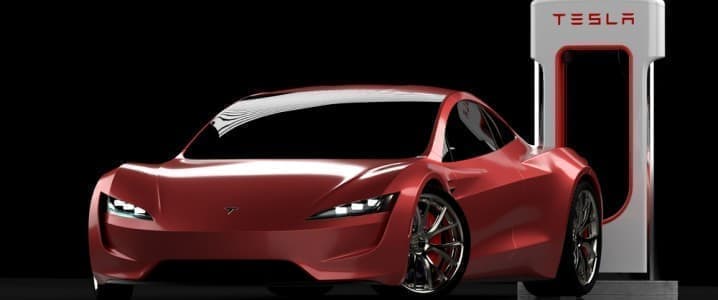The EV kingpin, Tesla Inc. (NASDAQ:TSLA), has delivered yet another stellar earnings report that has again cemented its credentials as one of the few electric vehicle manufacturers ready to challenge the ICE hegemony. For years, naysayers and short-sellers like Citron Research were willing to bet the house that Elon Musk's high-wire act wouldn't end well, with the preordained denouement being a bankruptcy or a sale. But those speculations have been short-lived: The rapid-fire company has been able to inject its large-scale manufacturing capabilities into Musk's inspired improvisation and is inching closer to its target of delivering a million EVs in a year.
Tesla reported that it built 237,823 cars (+64%) and delivered 241,391 (+73%), finishing Q3 with $1.3 billion in free cash flow and $16 billion in cash and cash equivalents. That delivery clip is now within touching distance of the magical 250K deliveries per quarter that will see Tesla become the first-ever EV manufacturer to sell a million EV units in a single year. Tesla is already ranked as the best-selling electric vehicle manufacturer worldwide after selling close to 421,000 units in the first half of 2021, translating into a market share of about 15%, with Volkswagen Group and General Motors among the runners-up.
Tesla's report had other bright spots: Revenue of $13.76B marked 56.9% Y/Y growth while GAAP net income of $1.6B was good for a 389% Y/Y increase.
However, one particular line-item captivated Wall Street's imagination: Tesla's profit margins.
Related: Will The Energy Sector Continue To Outperform The Market? Automotive gross margin clocked in at 30.5% vs. 28.4% consensus; 27.7% last year and 28.4% last quarter. Tesla was able to realize the significant margin improvement even with the average selling price of a vehicle down 6% due to a shift in model mix and also by cutting operating costs.
How significant is this? Morgan Stanley puts it succinctly:
"Tesla posted a surprising 23.3% Adjusted EBITDA margin thanks to a YoY variable 37% auto gross (ex ZEV). Annualized 3Q EBITDA is approaching $13bn… getting into GM and Ford territory magnitude, despite a fraction of the revenues."
Indeed, Tesla now boasts one of the highest operating margins in the vehicle manufacturing business at nearly 15%.
But the EV company might be able to expand its already impressive margins by pulling off another nifty trick: Deploying cheap, cobalt-free batteries in its cars.
LFP Batteries
In its latest investor presentation, Tesla revealed that it's switching battery chemistry for all standard-range Models 3 and Y from nickel cobalt aluminum (NCA) chemistry to an alternative, older technology that uses a lithium iron phosphate (LFP) chemistry.
LFP cells not only have much longer useful lifetimes but are also cheaper than NCA or nickel manganese cobalt (NMC) cells. The biggest trade-off is that LFP batteries have a lower energy density. However, LFP batteries are still able to compensate for this shortcoming by dramatically cutting on thermal runaway in the event of a crash, meaning an LFP battery pack requires much less volume on cooling and structural protection to keep the cells separated.
Many electric buses in China already use LFP batteries. Last year, Tesla introduced LFP batteries in its standard range Model 3s in China and dropped the starting price from 309,900 yuan ($48,080) to 249,900 yuan ($38,773). CEO Elon Musk has revealed that the improving energy density of LFP batteries now makes it possible to use the cheaper, cobalt-free batteries in its lower-end vehicles so as to free up more battery supply of lithium-ion chemistry cells for Tesla's other models.
Related: Oil And Gas Stocks Are Popular Once Again
Up to now, intellectual property restrictions have kept LFP cells mostly within China. But Tesla will now be able to deploy them in its pivotal U.S. market after it won approval from the Chinese government to start using LFP batteries in Chinese-made BEVs in 2020. Indeed, Tesla is making the switch to LFP mandatory in all its markets after a positive reception in the U.S.
Last December, Bloomberg NEF, a clean energy researcher that has been, among other things, tracking battery costs, announced that battery costs had dipped below the $100 per kWh threshold for the first time ever. The crucial milestone was achieved for battery packs designed for electric buses in China.
In the EV industry, the $100 per kWh battery cost price point is generally regarded as the Holy Grail critical for the wider adoption of electric vehicles by making them cost-competitive at the sticker price, which remains an important psychological barrier for many buyers. The powertrain typically accounts for more than 70% of the cost of an EV. Tesla's LFP switch not only means fatter margins but can fast track the company in the race to $100 per kWh leading to longer growth runways.
By Alex Kimani for Oilprice.com
More Top Reads From Oilprice.com:
- Canada’s Oil Industry Is Facing Resistance On All Fronts
- Oil Prices Could Explode As U.S.' Largest Storage Hub Nears Empty
- Forget $100, Options Traders Now Betting On Oil Prices Hitting $200


















BMW and Daimler did buy CATL with new Na battery awaited for 2023 and CATL in china did buy lithium mining.